“In sheet metal fabrication, aluminum bending is the most commonly employed technique for large-scale production. The fidelity of aluminum lies in its ease of fabrication and formability.”
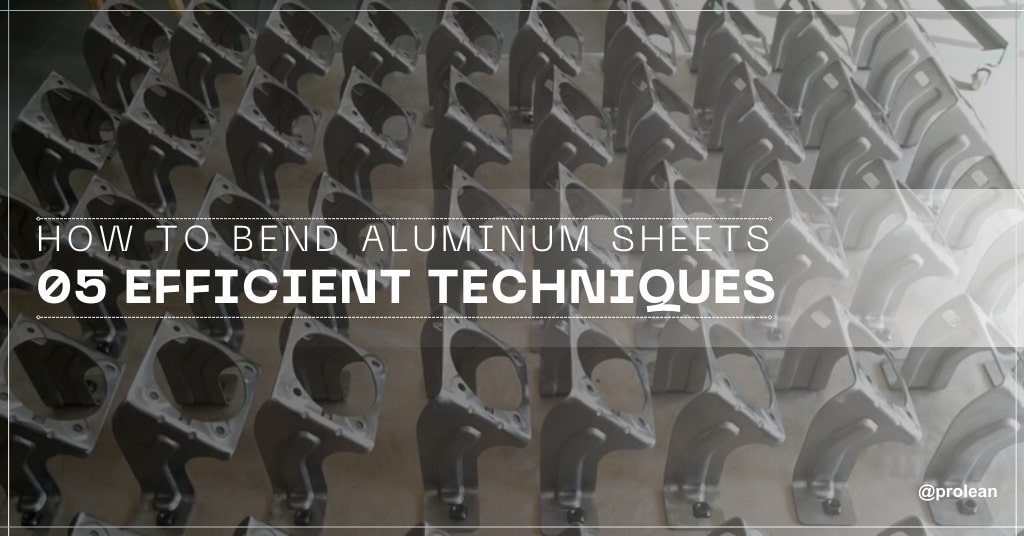
Aluminum is one of the most used materials in metalworking. Aluminium sheets and bars are manipulated into desired parts using different fabrication techniques; bending is one of them. However, it’s not as simple as it sounds, as there are various challenges associated with the process. To bend aluminium, you need certain things to consider. For instance, the grade you are working with and the optimum bend tolerance you are looking for.
Why is aluminum the most preferred material for sheet metal bending projects? The answer lies in its superior formability. Aluminum is known for its flexibility, lightweight nature, and tremendous machinability.
This article will cover the five efficient techniques of aluminium bending, common alloys & grades, challenges to bending aluminium sheets, etc.
Aluminum Sheet Bending: The Process
The bending process starts by selecting the die and determining the actual bend requirements. Fabricators calculate the critical design parameters, such as the required bend allowance, bend radii, material thickness, force, and the point from which to bend the sheet. The die used is also a key consideration. The most commonly used dies include 90° dies, and acute angle dies.
After carefully considering these key factors, the setup of the CNC brake press starts. Depending on the design complexity, material, and optimal bedding requirement, there are multiple ways to bend. The choice of the right die and tool is considerably important for operating the brake press. The CNC information is inputted into the brake. This helps the machine test the force required for bending.
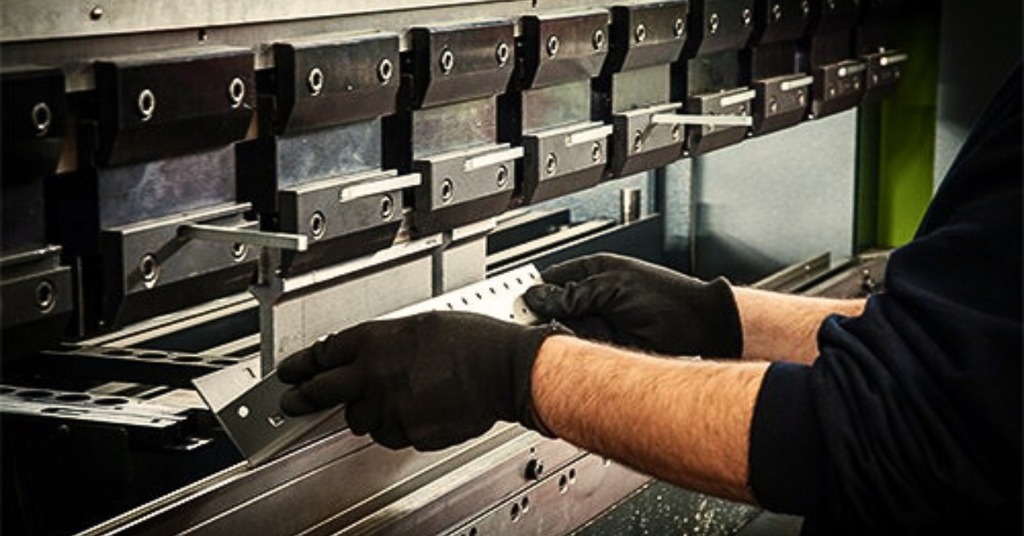
Aluminum Sheet Metal Bending
Then align the flat aluminum sheet between a tool and a die. Operate the machine to bend the AI sheet according to the required output bend. Lastly, remove the sheet and send it for further processing.
(“Note: The dies used to bend aluminum are commonly made of carbides and steel material.”)
Related: The Basics of Sheet Metal Fabrication
Try Prolean Now!
Effective Techniques To Bend Aluminum Sheets
Next, let’s discuss how to bend aluminum sheets. Most manufacturers normally employ five techniques for precision bending to achieve the desired bending. Let’s figure out how these bending types apply to aluminum metal.
1. Press Brake
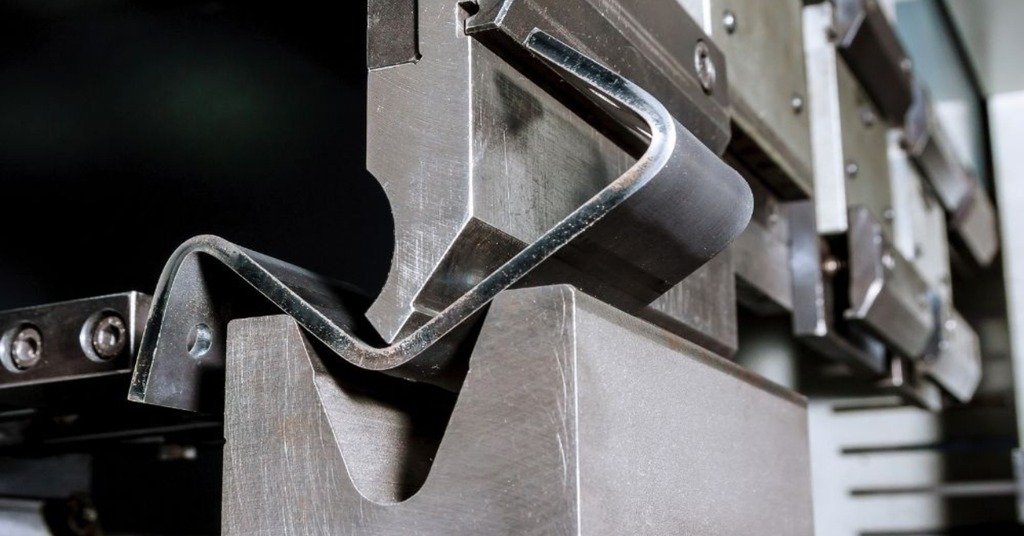
Brake press for bending metal sheets
An aluminum sheet is placed between the two dies and press-struck to create bends. The core advantage of using a press brake lies in its precision. It helps shape flat, square aluminum sheets. Press bending uses a press to bend aluminum into the desired geometry. A brake press is usually implemented for linear bends and folds. This vital technique is arrayed with a folding tool, a die, which is placed on the press. Due to the high hydraulic pressure assembly, press brakes can accommodate material thicknesses from 0.5 to approximately 15 mm.
2. Coil Bending
Coil bending is also known as roll bending or three-roll bending. This approach uses a cylindrical rotating roller to bend aluminum into curved and rounded forms. The rollers apply pressure to the aluminum sheet to turn it into the desired shape.
The rotating cylinder can be adjustable and positioned to attain even tighter tolerance with minimal turnaround. This technique is favoured for curved shapes and achieves tighter tolerance up to + 0.01- 0. x.
3. Rolling Machine
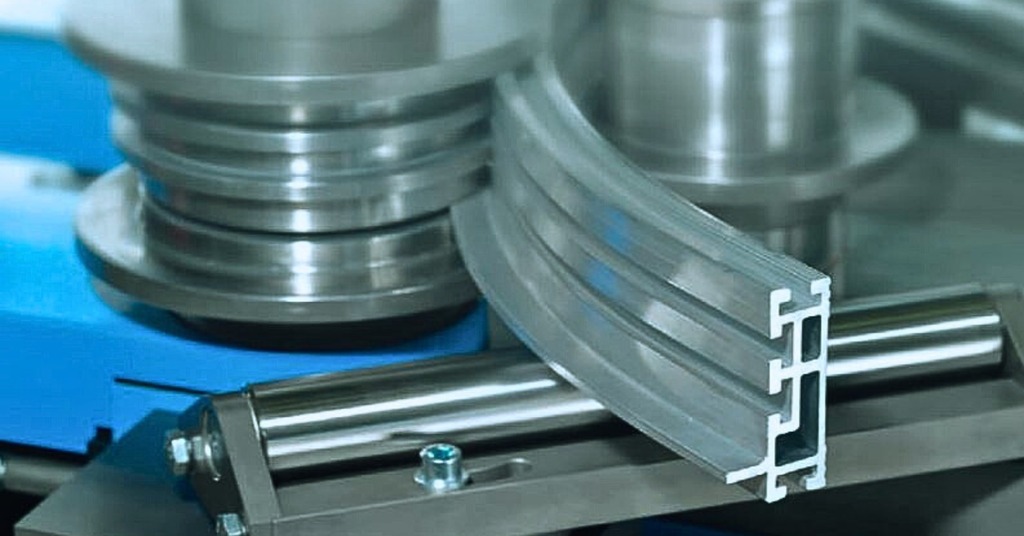
Rolling Aluminum Bending
Rolling machines, also known as rolling mills or rolling forming, come in two forms: manual and automated. The choice depends on the production volume and desired bending curvature. The material (aluminum sheet) is deformed during operation to achieve the desired output. Rolling machines are well suited to shaping conical or cylindrical bends in aluminum sheets. Tubes, air tanks, and chimneys are some key applications of rolling machines.
Capacity-wise, it usually bends aluminum sheets of multiple thicknesses ranging between 1 mm to 50 mm approx.
4. Compression Bending
This bending uses a die or punch to apply mechanical stress on an aluminum sheet to make a bend. How does it perform bending operations?
First, the technician places the aluminum sheet between a punch and a die. Then, they operate the machine, and ultimately, the punch applies pressure to bend the sheet to the desired form. Compression bending is used for smaller to medium-thickness metal sheets. However, it’s difficult to make bends in higher-thickness sheets using this technique.
5. Folding
Metal bending with folding machines involves placing a metal sheet onto the machine, aligning it precisely to achieve a fixed angle, and then applying force from one edge to bend the sheet into the desired shape. This method is particularly useful when working with large sheets or when high-volume production is required.
Best Aluminum Alloys Use For Bending Applications
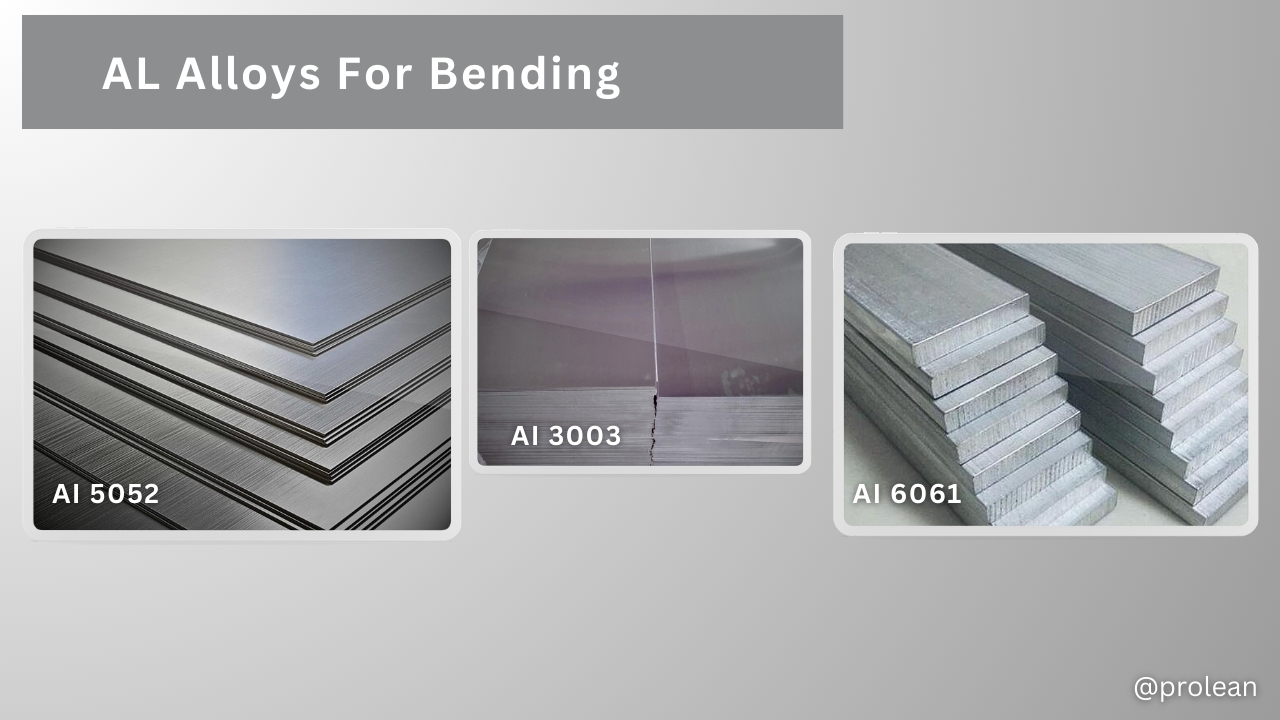
Aluminum Alloys for Bending
During the selection of aluminum alloy, various factors need to be considered. For instance; formability, elongation percentage, workability, and thermomechanical treatments. Among aluminum grades, mostly aluminum 3xxx series alloys are used in bending applications due to their high formability.
Here are examples of some sound aluminum grades known for their excellent manufacturability.
Aluminum 5052
- Aluminum 5052, is a high-strength aluminum grade widely employed for bending.
- This alloy is primarily used along with magnesium.
- AA5052 is known for its high elongation percentage.
- This alloy is used in marine equipment, medical tools, and signages, for its highest corrosion resistance ability.
Aluminum 3003
- Al 3003 has excellent workability, weldability, and a good elongation percentage.
- These alloys are enriched with manganese content. Magnesium imparts structural abilities to make them sound for bending applications.
- You can twist these alloys with minimum force or pressure.
- Common uses of these alloys are; siding, storage tanks, roofing, and chemical machinery.
Aluminum 6061
- AA6061 comprises magnesium and silicon and usually comes in two forms; 6061-T4 and 6061-T6.
- It shows superior structural strength, rigidity, and a good elongation percentage. However, AI6061’s rigidity results in cracking when used in bending operations.
- It possesses lower bendability than AA3003 & 5052.
- Manufacturers Bend Aluminum 6061 for diverse applications in the structural sectors of the automotive and aerospace industries.
Try Prolean Now!
Aluminum Sheet Bending: Things to Consider
In sheet metal fabrication, some key aspects should be considered to get the best possible bends and geometries.
1. Formability
Formability refers to the flexibility or elasticity of metal aluminum when it undergoes deformation or compression without being dented. Aluminum formability varies from grade to grade. The factors depend upon thickness, temper, temperature, and hardening of work.
2. Bending Direction
Bending direction plays a pivotal role in aluminum sheet bending. It is considerably perpendicular to the metal sheet direction to avoid cracks related problems. The parallel direction poses the problem of cracks on the targeted material bend.
3. Clearance of Bending
There must be a gap between the punch and the die to avoid bending failures. If there is no bending clearance, interference can occur.
4. Bend radius and thickness
The degree of bending dictates the thickness of the aluminum sheet. Mostly, people get confused about the rule of thumb between radii to bending ratio. Both of these have inverse relations. It means that the higher the thickness, the smaller the radii will be. Similarly, thinner aluminum sheets possess small radii. Normally, thicker aluminum sheets with smaller radii require higher force to bend as compared to thinner sheets with small radii.
5. Level of Elongation
The elongation percentage determines the braking ability of the aluminum sheet. It usually represents the elasticity of sheet metal. The higher the elongation percentage, the easier it will be to bend aluminum sheets.
Common Problems Encountered During Aluminum Sheet Metal Bending?
Fabricators often face several problems during the bending operation of sheet metal bending of aluminum. Some common issues include; burr formation, cracking, bending interference, indentation, slippage, and bulge. Let’s figure out these common bending issues in detail;
1. Cracking
It is the most common defect in bending aluminum sheets. Typically, bending cracks appear due to misalignment of metal sheets, smaller bending radii, tensile surface, inadequate pressure, and unremoved burr from the part edges. To avoid these cracking issues, fabricators must employ holes or grooves to make the bending operation smooth and crack-free.
2. Bending Interference
Certain determinants cause the problem, such as the shape and size of the part and the selected die. These issues can be minimized by considering bending die designs, the sequence, and the dimensions of bends.
3. Bending indentation
Bending indentation often occurs on the inner surfaces of metal sheets. Normally, the strong press against the sheet metals creates friction that ultimately leads to noticeable marks on the sheet. To prevent this, anti-indentation rubber balls or ball bearing dies can be used. These anti-indentation balls eradicate the issue through physical isolation.
4. Splits and Wrinkles
In some cases, aluminum metal sheets have experienced necking or splitting issues. These issues are caused due to excessive bending when thin aluminum sheets are pushed above their limit of workability. To avoid these issues, operators must examine the thickness and sheet radii before bending. Conversely, wrinkles are caused by applying high stretch or compression strain to aluminum sheets.
What are the Advantages of Using Aluminum for Custom Bent Parts?
Aluminum comes with various advantages when utilized for bending applications and custom intricate parts. Here are some of the notable advantages of aluminum;
- High Durability: Aluminum is highly durable and flexible when being bent for different intricate geometries. Its malleability features make it sound to bear high mechanical stress. Moreover, it has a distinct property of non-corrosiveness.
- Economical Alloy: Aluminum offers several economic pros when used in bending applications. It produces no waste during bending operations and has a minimum cost compared with other metal alloys such as steel, cast iron, titanium, and brass.
- Lightweight property: Aluminum’s prime feature is its lightweightness. This property, coupled with its high strength and machinability, makes it an ideal choice for bending applications.
- Workability: Regarding workability, aluminum is at the top of the list. It’s quite easier to cut aluminum than steel. Its high adaptability and malleability properties make it sound for fabricators to make simpler to complex bends.
- High heat tolerance: Compared to other metals, aluminum has gained significant attention due to its high heat tolerance. Parts made of aluminum can withstand high heat rates, and tight tolerances are notably important.
- Versatility: Metals ductility plays a key role in bending. It determines how well the metal can bear shear and mechanical stress. Aluminum for its high ductility is well suited for bending jobs. Moreover, bend aluminum bears high thrusts without being damaged.
Get Professional Sheet Metal Bending Services at Prolean
Sheet metal bending often comes with numerous technicalities. Sometimes, parts lead to deformation, warping, and shrinkage. But thanks to our cutting-edge bending technology. We here at prolean help businesses to achieve even tighter tolerances below ±1. Take a glance at our bending approach;
Our sheet metal bending services ensure precision in meeting your intended project demands. We handle aluminum parts with high tolerances and large-volume production capacities while ensuring efficient and minimal turnaround. Moreover, we provide an extensive range of materials, such as aluminum, brass, copper, and steel (with respective grades).
Our facility helps you out from the design phase to surface finish prospects. Want to know more about our abilities? Contact us now and get an instant reply if you want to analyze or optimize your project; get an instant free quote!
Try Prolean Now!
Summing Up
Sheet metal bending is a versatile metal fabrication process. It offers unique and economical pros when employed for medium to large volumes of production. However, several key determinants need to be considered for smooth and accurate bends.
The core edge of this tremendous technique is that it does not require any tooling or mold for its operation. In addition to the applications of aluminum sheet, it’s widespread across the globe from automotive, aerospace, and consumer products to custom manufacturing appliances.
Although there are some challenges associated with bend aluminum operations, keeping their alternate solution or information provided in this guide will help you make your bending process more uniform and with relatively few errors. Moreover, this article entails grounding knowledge on sheet metal fabrication and helps you through bending operations.
To get the best optimal output for your bending requirements, consult with professionals to optimize the performance intended for your desired applications.
FAQs
Q1. Types of sheet metal fabrication?
There are certain types of sheet metal fabrication commonly practiced in manufacturing industries; such as; sheet metal blanking, sheet metal bending, piercing, and punching.
Q2. What metals are commonly used for metalworking?
Mostly, steel, aluminum, brass, and carbon, are used in metal fabrication industries. These materials are well suited for cutting, shearing, and piercing applications.
Q3. Why is aluminum highly used for fabricating use?
Aluminum due to its exceptional formability and lightweight properties is considered best for metal fabrication applications.
Q4. What is elongation of aluminum alloys?
The level of elongation for aluminum sheets indicates the highest level of stretch till the deformation of aluminum sheets. The more elongation, the higher will be the bending efficiency.
Resources
- A-Pradeau (2016), Prediction of failure in bending of an aluminum sheet alloy, International Journal of Mechanical Sciences, Volume 119: Retrieved From: Science Direct
- Ida Westerman (July 1, 2011): Three Point Bending of Aluminum Alloys: Influence of Microstructures and Textures on Bendability and Fracture Behaviour: Retrieved From: Springer

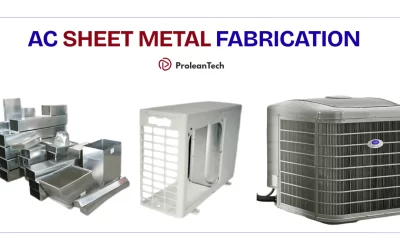
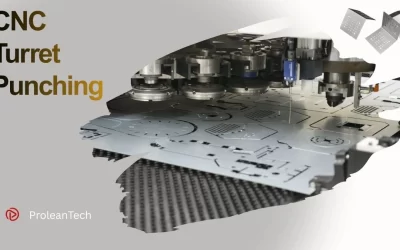
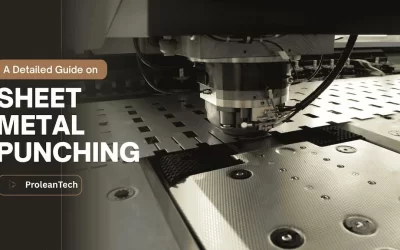
0 Comments